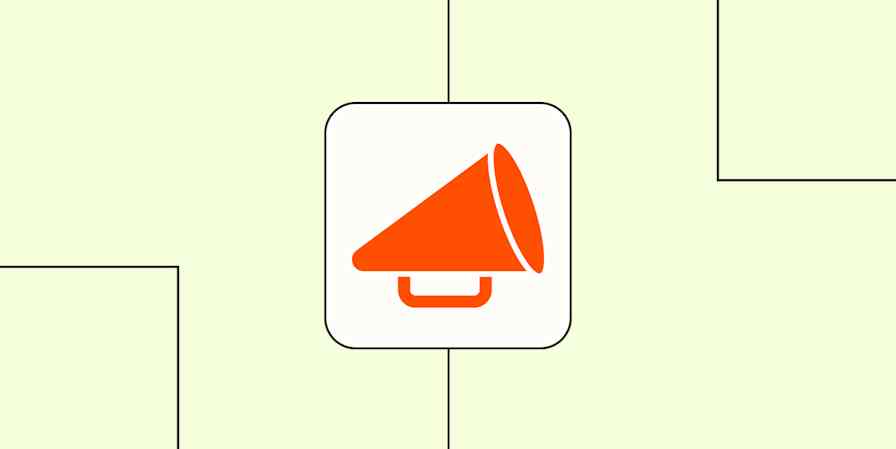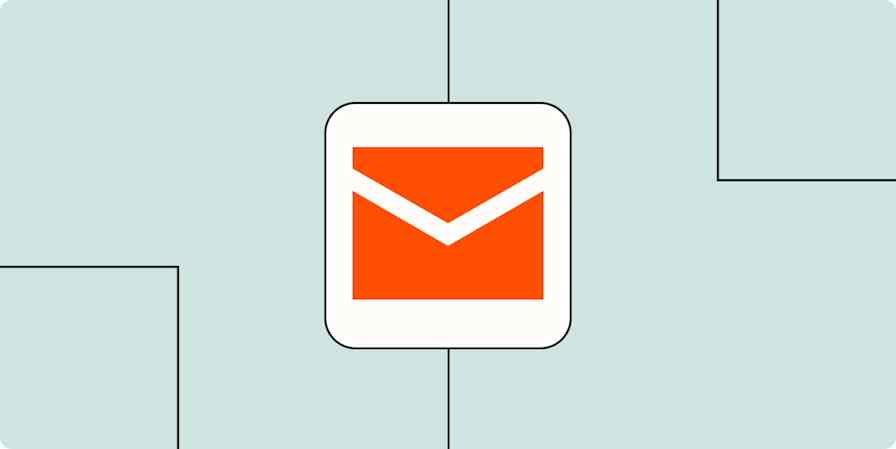I once worked for a retail company that inexplicably made me read a book about the science behind shopping and how to leverage those principles in your marketing strategy. Why this was an on-your-own-time requirement of a part-time sales associate, we're not here to question, but in the end, the book had plenty of tips that made me a more effective sales associate and, as it turns out, future marketer.
But the best marketing strategies aren't found in a book—they come from experience.
Here are seven tried-and-true marketing strategies, according to professional marketers.
Table of contents:
Observe what your competitors are doing—and do the opposite
It's easy to look at your competitors—especially the ones that seem to be succeeding—and borrow inspiration from their marketing playbook. But Sai Sathish, Marketing Manager at Consainsights, suggests a different strategy: "Never follow the crowd. Observe what everyone else is doing—then do something different."
"For example," Sai shares, "When competitors flood LinkedIn with generic thought leadership, we create interactive decision tools. When they produce 30-page whitepapers, we deliver three-minute video summaries with actionable insights. This approach has consistently delivered higher engagement, better conversion rates, and stronger client relationships."
Here's how Sai says you can apply this in your own work: "Conduct a competitive market analysis—not to imitate but to identify gaps. Map your competitors' marketing strategies across channels, messaging, and formats. Every gap represents an opportunity."
Here's how that worked in practice for Sai:
"When our industry insisted on gating all valuable content, we experimented with ungated premium research snippets. This counterintuitive approach tripled our qualified leads since our prospects were hunting for the complete analysis. And when competitors were still sending static PDFs, we repurposed our market research data into interactive dashboards. Engagement skyrocketed because we addressed the same pain points but in a refreshingly accessible way."
That's not to say you should never do what your competitors are doing. Shawn Byrne, CEO of My Biz Niche, says, "You can borrow great ideas, but you need to add something unique—something others aren't saying or doing. That's how you become the first choice, not just another option. "
Sell the outcome, not the product
You have to market your products and services in order to sell them—there's no other way around it. But how you market your products is key.
Brian Lischer, founder and CEO of Ignyte says, "Customers don't buy products—they buy solutions." That's why his best marketing strategy is this: "Sell the outcome, not the product."
Brian gives a helpful example: "I recently worked with a SaaS company struggling with poor positioning and messaging. Their website was packed with technical jargon like API integrations, machine learning, and automation, but there was nothing about what those features actually meant for their customers. When we flipped their messaging from 'Our platform leverages AI for automated reporting' to 'Spend less time on manual reports,' their conversion rate increased significantly within the first month."
"The most successful brands communicate beyond their own features to the transformation they enable," explains Brian.
How do you know if you're selling an outcome instead of a product? Brian suggests this: "Audit your marketing materials. Count how many times you say 'we' versus 'you.' Then rewrite your product-first statements into customer-first benefits. When you focus on features, you force customers to figure out why they should care. When you focus on outcomes, you give them clear reasons to choose you."
Divya Ghughatyal, a digital marketing consultant at Gleantap, approaches marketing the same way. "Instead of bombarding audiences with sales-focused emails, we share content that educates, entertains, or solves problems—whether it's a blog post, interactive marketing, or personalized product recommendations." The result? Divya says, "This strategy has not only built trust, but also increased long-term customer loyalty."
Divya's advice for marketers looking to apply this strategy is simple. "Start by understanding your audience's pain points and interests. Then use data-driven insights to create content that resonates with them." For example, with email marketing, Divya recommends this: "Balance promotional emails with value-driven ones, such as industry tips, exclusive insights, or customer success stories."

Define your ideal client and market to that one person
It's a classic marketing adage: when you try to appeal to everyone, you appeal to no one. But the saying exists for a reason and bears repeating.
"Too often, marketers fall into the trap of casting a wide net, hoping to capture as many potential leads as possible. But when you speak to everyone, you resonate with no one," says Iryna Kutnyak, Director of Operations at Quoleady.
Instead, Iryna suggests:
"Pick one person you genuinely want to reach—your ideal client, a loyal reader, or that one customer who perfectly fits your product. Clearly imagine their pains, goals, routines, and even their favorite coffee order. Then craft your messaging as if you're talking directly to that person. This is how you give your content personality, clarity, and authenticity."
"Suddenly, your marketing stops feeling like generic noise and becomes a real conversation," says Iryna. "It's a small shift that can make a huge impact." Iryna's experienced it firsthand. "This approach helped me turn vague messaging into compelling content that consistently connects. Marketing gets easier—and more effective—when you remember there's always a real human on the other side of the screen."
Reverse-engineer your marketing goals
If you haven't checked in with your business goals in a while, now's the time.
Sascha Hoffman, a Lifecycle Marketing Consultant at SH Media says, "Marketing isn't just about creative campaigns—it's about working backward from the goal to ensure every step leads to the right outcome." That's why this is his best piece of strategic marketing advice: "Reverse-engineer everything."
Sascha shares an example of how to reverse-engineer your revenue goals. "If you need to close a revenue gap of $X, how many new leads will you need to do so? What's your conversion rate from lead to customer?" Once you've identified those metrics, Sascha says, "Work backward to build customer acquisition strategy."
Why is this marketing strategy so effective? "It keeps marketing data-driven and predictable," Sascha explains. "Instead of guessing, you build a strategy that mathematically works before even launching a campaign. Always start with the end in mind and break down the numbers to ensure your efforts align with business goals. If the math doesn't add up, neither will your results."
Treat your business like you would a client's
The least physically active I've ever been in my life was, ironically, when I was the manager at a gym. I would suggest all sorts of strategies to help clients stay consistent with their fitness routine—sign up for classes in advance, do 10 squats every time you want to scroll on your phone—but I never took my own advice.
Chris Rossi, a digital marketing consultant with Attorney Sluice, says he notices a similar contradiction among marketers. "Too many marketers become the 'plumber with the broken sink.' They deliver fantastic results elsewhere, but neglect their own growth. The challenge is that we often struggle to analyze our own business objectively because it's ours. We think, 'This works for clients, but it won't work for me because [fill in the blank].' In reality, that's rarely the case."
Chris's advice? "Take a step back and look at your business as if you had just hired yourself. Apply the strategies you know lead to success. You'll be amazed at how well they can work for you, too."
Take focused action
When I first started running social for a previous company, my strategy was simply to throw everything at the wall and see what stuck. If a competitor had their CEO dancing to a trending song on TikTok, I had our CEO dancing to a trending song TikTok. It…wasn't great.
Lisa Benson, a marketing strategist with DeBella DeBall Designs, explains where I went wrong. "Too many people get caught up chasing the latest trends, jumping from one platform to another, or throwing money at ads with no real plan. But the truth is, marketing only works when it's built on a clear, intentional foundation."
Here's Lisa's advice on how to build that foundation in four steps:
Know your terrain. Understand your market, your audience, and what makes you different.
Build your strategy. Create a roadmap that moves your brand forward with purpose.
Take focused action. Deploy only marketing tactics that serve your broader goal—no more random acts of promotion.
Review and adjust. Evaluate your marketing strategy and tactics to identify what's working, what's not, and refine as needed.
Bottom line, Lisa says, "Marketing isn't about doing more. It's about doing what actually moves the needle."
Think less, sell more
We've all sat in meetings where we analyzed a campaign within an inch of its life only to "pin it" and "circle back" later on. The result: nothing. No action taken, no reward gained.
Agata Gruszka-Kierczak, International SEO Manager for WhitePress, is no stranger to this. "I used to get caught up in endless analysis, delaying any actual action. Then I realized that launching simpler solutions quickly and then iterating improvements based on real user data was far more effective."
"Instead of building a perfect campaign every time, create an MVP (minimum viable product) of that campaign. For example, instead of spending three months building the perfect landing page, build a basic one that actually answers users' needs, run paid ads to it, and allow it to do the work. Then gather data around what's working and what's not to help iterate on your design so you can build up to the perfect landing page."
Full disclosure from Agata: "This approach won't work every time. But which is better: waiting weeks for the launch or having the possibility to have it working from day one and then going for perfection?"
Automate your marketing with Zapier
A marketing strategy is only as good as its execution. With Zapier, you can create an automated marketing solution across every channel. Build landing pages and forms on Zapier Interfaces, store and manage lead data with Zapier Tables, and even build AI chatbots to interact with your customers with Zapier Chatbots. Then connect it all to 7,000+ apps so you can have a fully automated system across your tech stack.
Learn more about how to automate your marketing and sales ops processes, or get started with Zapier Interfaces to see what's possible..
Zapier is the most connected AI orchestration platform—integrating with thousands of apps from partners like Google, Salesforce, and Microsoft. Use interfaces, data tables, and logic to build secure, automated, AI-powered systems for your business-critical workflows across your organization's technology stack. Learn more.
Related reading:










